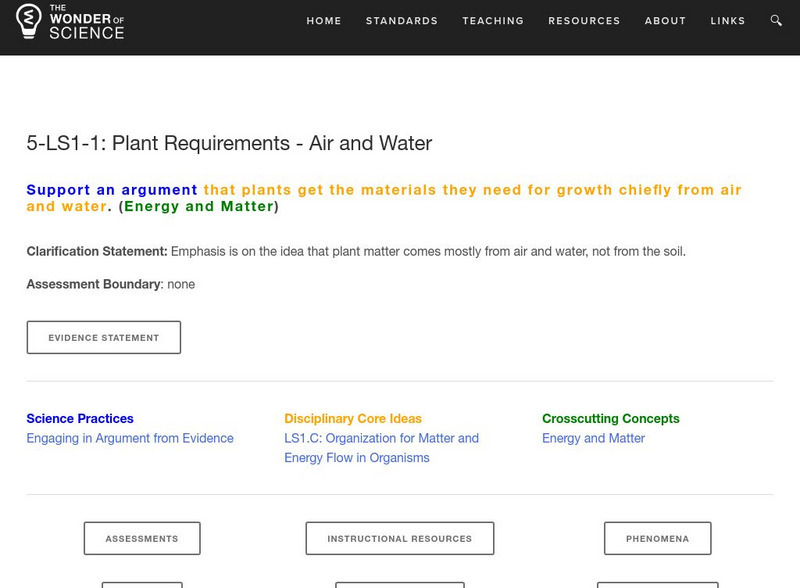Hi, what do you want to do?
Curated OER
Phytoplankton
In this phytoplankton worksheet, students read and study online information on plankton blooms to answer 8 short answer questions about the topic.
Curated OER
Mud in the Water
Sixth graders investigate erosion. In this erosion instructional activity, 6th graders explore how farming changes the environment. Students construct an erosion model and research ways to protect the soil from excess mud generated by...
Curated OER
Stratification
Young scholars study the process of stratification and seed dormancy. In this germination lesson plan students prepare a medium in which to grow seeds.
Curated OER
Spring Migration, Milkweed Monitoring
Young scholars watch for milkweed plants from the previous fall and choose several new plants to monitor. Then make observations and measurements about the plants. The connection with the weather is also made with the monitoring of...
Curated OER
Water Quality Monitoring
Students comprehend the four parameters of water quality. They perform tests for salinity, dissolved oxygen, pH and clarity or turbidity. Students comprehend why scientists and environmental managers monitor water uality and aquatic...
Curated OER
Organisms – Their Needs
Students compare and contrast different organisms characteristics. In this life science lesson, students design an experiment about plants and animals needs. They collect data and write their conclusion about the experiment.
Curated OER
The Principles Of Composting
Learners put items in a plastic bag and watch the effects of composting. While completing the experiment, students answer questions and ask permission to start their own compost pile at home.
Curated OER
Mud in the Water
Students build a soil erosion model to study the importance of soil conservation. They investigate how land forms from both constructive and destructive forces.
Curated OER
The Web of Life
Students participate in a game in which they discover the balance of life in the ocean. They identify different organisms that rely on different types of food. They answer questions to complete the lesson.
NOAA
Noaa: Estuaries 101 Curriculum: Nutrients in an Estuary
An overload of nutrients, called eutrophication (Greek for "good-nutrition"), can be harmful to estuaries. This phenomenon is also referred to as "over-enrichment," or "nutrient pollution". Students will investigate the range of...
Science Education Resource Center at Carleton College
Serc: Habitat Part 2
This activity is designed for students to examine soil and determine which soil will be the best for plant growth. The students will also investigate the effect of sunlight on plants and the importance of sunlight in producing chlorophyll.
Alabama Learning Exchange
Alex: Field Challenge Strategy Game
Lesson plan describing a strategy game where students use flags in a large field to mimic the growth and spread of trees, grass, and shrubs. Rules for game include how trees, grass, and shrubs interact to compete for sunlight, nutrients,...
The Wonder of Science
The Wonder of Science: 5 Ls1 1: Plant Requirements: Air and Water
Create lessons to show that plants use air and water primarily to grow with help from the resources on this site. Use the work samples, phenomena, assessment templates, and videos to help students understand the requirements of plants to...
PBS
Pbs Teachers: Soil in the Amazon
Compare plants grown in simulated Amazon soil to those grown in soil prepared by the slash-and-burn method. Describe leaf development in plants grown in different soils and chart, average and graph plant growth by height
NC State University
Ncsu.edu: Adventures of the Agronauts
This site is an online science curriculum on how to grow plants on the Moon. There are six lessons that have a glossary also included. There are movies that demonstrate concepts, and teacher resources. The sites topics cover, the Earth,...



















